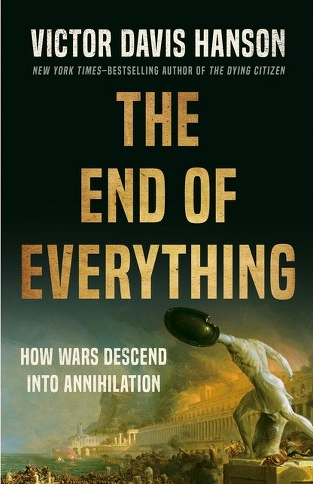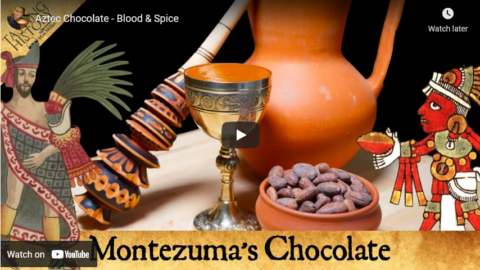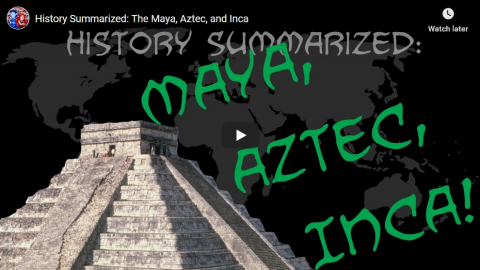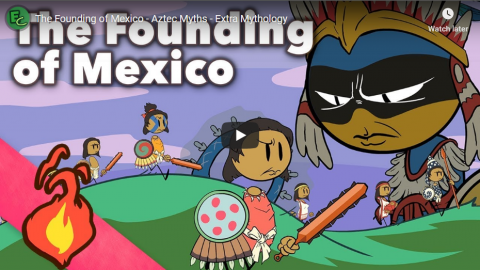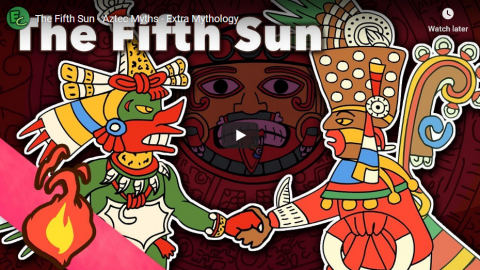I had an acquaintance in college who was a dedicated leftist and who also believed in substantial group differences in average IQ.1 One day she was fretting at me that advances in data science, genetics, etc. were going to make this unpalatable reality impossible to ignore, with detrimental consequences for both racial justice and social harmony. Facts and logic were going to explode the noble lie, oh no!
Obviously I had to physically restrain myself from laughing at her. Assuming for the sake of argument that such differences exist and are easily measurable, only somebody totally autistic would think that mere scientific evidence for them would cause them to be acknowledged.2 Just look at all the ridiculous “sky is green” type beliefs that society already successfully forces everybody to internalize. You mentioned biological and cognitive differences between men and women, which are far more obvious and noticeable than those between populations, but which we successfully force everybody to pretend do not exist. And that’s far from the silliest thing everybody pretends to believe, in our society or in others.
Put it another way: there is no such thing as a secular society, every country has a state religion, and you won’t get very far opposing it. Were there people in Tenochtitlan who secretly believed that blood pouring down the sides of the great step pyramid day and night wasn’t actually necessary to placate the gods? Yeah probably, but if any of them had tried to point that out, they would have been laughed at (and sacrificed). Were there people in the Soviet Union who privately doubted whether dialectical materialism was the true engine of history? Probably, yes, but everybody besides Leonid Kantorovich was smart enough not to mention it.
What are the religious precepts on which our society is founded? There are a few, but a belief in absolute racial equality is clearly one of them, and that view is now enshrined in the “real” constitution (civil rights caselaw and its downstream effects on corporate HR). Anything which contradicts that precept is just a total nonstarter. If a few nerds somewhere found irrefutable evidence of important differences between groups, they would quietly hide it, and if some among them were like Reich too autistic or principled to do that, they would be ignored, shouted down, or persecuted. Possibly this would even be a good thing — every society needs its orthodoxies, and sometimes those who corrupt the youth need to drink the hemlock.
We’ve gotten far afield, though. As an inveterate shape-rotator, my favorite part of the book was Reich’s description of the statistical and mathematical techniques that can be used to determine when population bottlenecks occurred, how recently two populations shared a common ancestor, and when various mixing events occurred.
Jane Psmith and John Psmith, “JOINT REVIEW: Who We Are and How We Got Here, by David Reich”, Mr. and Mrs. Psmith’s Bookshelf, 2023-05-29.
1. Not to get all “Dems are the real racists”, but anecdotally this view does seem slightly more prevalent among my left-wing friends than my right-wing friends, though that seems to currently be changing.
2. Somebody totally autistic or somebody who had already drunk the kool-aid on literally every other ridiculous official viewpoint imposed by our society. In her case it was probably the latter. As I said she was a leftist, and women in general are much less likely to be autistic but much more likely to value social conformity.
March 20, 2025
QotD: “[T]here is no such thing as a secular society, every country has a state religion, and you won’t get very far opposing it”
June 22, 2024
The End of Everything
In First Things, Francis X. Maier reviews Victor Davis Hanson’s recent work The End of Everything: How Wars Descend into Annihilation:
A senior fellow in military history and classics at Stanford University’s Hoover Institution, Hanson is a specialist on the human dimension and costs of war. His focus in The End of Everything is, as usual, on the past; specifically, the destruction of four great civilizations: ancient Thebes, Carthage, Constantinople, and the Aztec Empire. In each case, an otherwise enduring civilization was not merely conquered, but “annihilated” — in other words, completely erased and replaced. How such catastrophes could happen is the substance of Hanson’s book. And the lessons therein are worth noting.
In every case, the defeated suffered from fatal delusions. Each civilization overestimated its own strength or skill; each misread the willingness of allies to support it; and each underestimated the determination, strength, and ferocity of its enemy.
Thebes had a superb military heritage, but the Thebans’ tactics were outdated and their leadership no match for Macedon’s Alexander the Great. The city was razed and its surviving population scattered. Carthage — a thriving commercial center of 500,000 even after two military defeats by Rome — misread the greed, jealousy, and hatred of Rome, and Roman willingness to violate its own favorable treaty terms to extinguish its former enemy. The long Roman siege of the Third Punic War saw the killing or starvation of 450,000 Carthaginians, the survivors sold into slavery, the city leveled, and the land rendered uninhabitable for a century.
The Byzantine Empire, Rome’s successor in the East, survived for a millennium on superior military technology, genius diplomacy, impregnable fortifications, and confidence in the protection of heaven. By 1453, a shrunken and sclerotic Byzantine state could rely on none of these advantages, nor on any real help from the Christian West. But it nonetheless clung to a belief in the mantle of heaven and its own ability to withstand a determined Ottoman siege. The result was not merely defeat, but the erasure of any significant Greek and Christian presence in Constantinople. As for the Aztecs, they fatally misread Spanish intentions, ruthlessness, and duplicity, as well as the hatred of their conquered “allies” who switched sides and fought alongside the conquistadors.
The industrial-scale nature of human sacrifice and sacred cannibalism practiced by the Aztecs — more than 20,000 captives were ritually butchered each year — horrified the Spanish. It reinforced their fury and worked to justify their own ferocious violence, just as the Carthaginian practice of infant sacrifice had enraged the Romans. In the end, despite the seemingly massive strength of Aztec armies, a small group of Spanish adventurers utterly destroyed Tenochtitlán, the beautiful and architecturally elaborate Aztec capital, and wiped out an entire culture.
History never repeats itself, but patterns of human thought and behavior repeat themselves all the time. We humans are capable of astonishing acts of virtue, unselfish service, and heroism. We’re also capable of obscene, unimaginable violence. Anyone doubting the latter need only check the record of the last century. Or last year’s October 7 savagery, courtesy of Hamas.
The takeaway from Hanson’s book might be summarized in passages like this one:
Modern civilization faces a toxic paradox. The more that technologically advanced mankind develops the ability to wipe out wartime enemies, the more it develops a postmodern conceit that total war is an obsolete exercise, [assuming, mistakenly] that disagreements among civilized people will always be arbitrated by the cooler, more sophisticated, and more diplomatically minded. The same hubris that posits that complex tools of mass destruction can be created but never used, also fuels the fatal vanity that war itself is an anachronism and no longer an existential concern—at least in comparison to the supposedly greater threats of naturally occurring pandemics, meteoric impacts, man-made climate change, or overpopulation.
Or this one:
The gullibility, and indeed ignorance, of contemporary governments and leaders about the intent, hatred, ruthlessness, and capability of their enemies are not surprising. The retreat to comfortable nonchalance and credulousness, often the cargo of affluence and leisure, is predictable given unchanging human nature, despite the pretensions of a postmodern technologically advanced global village.
I suppose the lesson is this: There’s nothing sacred about the Pax Americana. Nothing guarantees its survival, legitimacy, comforts, power, or wealth. A sardonic observer like the Roman poet Juvenal — were he alive — might even observe that today’s America seems less like the “city on a hill” of Scripture, and more like a Carthaginian tophet, or the ritual site of child sacrifice. Of course, that would be unfair. A biblical leaven remains in the American experiment, and many good people still believe in its best ideals.
June 3, 2024
18th Century Spiced Hot Chocolate
Tasting History with Max Miller
Published Feb 23, 2024Rich, thick, dark hot chocolate spiced with cinnamon and cardamom
City/Region: England
Time Period: 1747Up until the 19th century, the most popular way to partake of chocolate was to drink it. Aztecs drank a very bitter chocolate, and when Europeans brought it back home, they paved the way for one of the most perfect of food pairings: chocolate and sugar.
This hot chocolate is fairly dark, so feel free to add more sugar if that’s to your taste. It’s super rich and much thicker than most hot chocolates you’d get today, so you may only want to make a small amount of the drink and save the rest of the chocolate for later. The spices jump out at you, and even though mine still had a bit of grittiness from the cocoa nibs (it’s basically impossible to get it completely smooth at home), it was really, really good.
(more…)
October 16, 2021
City Minutes: Indigenous America
Overly Sarcastic Productions
Published 15 Oct 2021As we look at four pre-Columbian American cities, I don’t know whether to be more impressed with the the architecture or the landscaping. Probably both.
More Indigenous Myths & History:
The Five Suns (https://youtu.be/dfupAlon_8k)
Quetzalcoatl (https://youtu.be/451jzIesWoU)
Huitzilopotchli (https://youtu.be/Zj-jDOjBets)
El-Dorado (https://youtu.be/UHzkGueRz3g)
Pele (https://youtu.be/q1z19p48lZU)
Hawaii (https://youtu.be/xYouQESFE2A)Teotihuacan shirt: https://www.redbubble.com/shop/ap/903…
Timestamps:
0:00 – 1:03 — Teotihuacan
1:03 – 2:04 — Tikal
2:04 – 3:00 — Tenochtitlan
3:00 – 4:08 — Cusco
4:08 – 5:20 — ConclusionSOURCES & Further Reading: The Great Cities in History by John Julius Norwich, The Great Courses lectures “The Great City of Teotihuacan” and “Tikal – Aspiring Capital of the Maya World” and “The Aztec Capital of Tenochtitlan” from lecture series Maya to Aztec: Ancient Mesoamerica Revealed by Edwin Barnhart, and “Machu Picchu and the Sacred Valley” and “The Inca – From Raiders to Empire” from lecture series The Lost Worlds of South America by Edwin Barnhart.
Our content is intended for teenage audiences and up.
PATREON: https://www.Patreon.com/OSP
PODCAST: https://overlysarcasticpodcast.transi…
DISCORD: https://discord.gg/osp
MERCH LINKS: http://rdbl.co/osp
OUR WEBSITE: https://www.OverlySarcasticProductions.com
Find us on Twitter https://www.Twitter.com/OSPYouTube
Find us on Reddit https://www.Reddit.com/r/OSP/
August 24, 2021
Aztec Chocolate – Blood & Spice
Tasting History with Max Miller
Published 9 Mar 2021Help Support the Channel with Patreon: https://www.patreon.com/tastinghistory
Tasting History Merchandise: crowdmade.com/collections/tastinghistoryFollow Tasting History here:
Instagram: https://www.instagram.com/tastinghist…
Twitter: https://twitter.com/TastingHistory1
Tiktok: TastingHistory
Reddit: r/TastingHistory
Discord: https://discord.gg/d7nbEpyTasting History’s Amazon Wish List: https://amzn.to/3i0mwGt
LINKS TO INGREDIENTS & EQUIPMENT**
Sony Alpha 7C Camera: https://amzn.to/2MQbNTK
Sigma 24-70mm f/2.8 Lens: https://amzn.to/35tjyoW
Molinillo: https://amzn.to/3rpoXGJ
Cacao Beans: https://amzn.to/3v4feIe
Cacao Nibs: https://amzn.to/3sX7JAU
Achiote/Annatto Powder: https://amzn.to/3rpWe4CLINKS TO SOURCES**
The Secret Life of Chocolate by Marcos Patchett: https://amzn.to/3qoLOB1
For more information visit thesecretlifeofchocolate.com
The True History of Chocolate by Sophie & Michael Coe: https://amzn.to/3sWBl1f
Florentine Codex by Bernardino de Sahagún: https://amzn.to/2OrKiAE
Thomas Gage’s Travels in the New World: https://amzn.to/3sO3YxA**Some of the links and other products that appear on this video are from companies which Tasting History will earn an affiliate commission or referral bonus. Each purchase made from these links will help to support this channel with no additional cost to you. The content in this video is accurate as of the posting date. Some of the offers mentioned may no longer be available.
Subtitles: Jose Mendoza
PHOTO CREDITS
Metate et Mano: Yelkrokoyade, CC BY-SA 3.0 https://creativecommons.org/licenses/…, via Wikimedia Commons
Olmec Head No 3: By Maribel Ponce Ixba (frida27ponce) – Flickr, CC BY 2.0, https://commons.wikimedia.org/w/index…#tastinghistory #aztec #chocolate
May 4, 2020
History Summarized: The Maya, Aztec, and Inca
Overly Sarcastic Productions
Published 29 Jul 2017Human sacrifice, smallpox, and the Spanish empire … that’s the whole story, right? Haha, eheh, hehe, HA, not even close! The civilizations of Mesoamerica are fascinating in their own right, and very distinct from each other too! Step on in and I’ll learn you a thing or two.
Also no spoilers, but next time, I’m covering the Iroquois Confederation! Ok, maybe that was exactly a spoiler. [Reposted here.]
This video was produced with assistance from the Boston University Undergraduate Research Opportunities Program.
PATREON: www.patreon.com/user?u=4664797
MERCH LINKS:
Shirts – https://overlysarcasticproducts.threa…
All the other stuff – http://www.cafepress.com/OverlySarcas…Find us on Twitter @OSPYouTube!
February 28, 2020
QotD: Greek and Roman views of markets
The debate over the Polanyi and Finley view of ancient economic organisation — or perhaps over the Marx and Weber and Polanyi and Finley views — does not seem to have been followed with much attention by libertarians and conservatives. It is worth following, even so. Beyond a very basic level, history is as much about the present as the past. Gibbon’s Decline and Fall of the Roman Empire is a masterpiece of pure history. But it is also an account of what he saw as the long night of reason — and its attendant nightmares — between the golden age of the Antonines and his own age, and an anxious search for reassurance that there would be no second sleep. Macaulay’s History of England is in part an attempt to legitimise the Victorian settlement as the culmination of historical processes that had their local origin in the 1680s. How readers can be brought to think about the past will insensibly affect how they see the present.
Now, if it could be shown that the Aztecs had no concept of market behaviour, and that they were motivated by considerations wholly different from our own, it would be of little consequence. Everything we know about Aztec civilisation raises doubts whether it was worth calling a civilisation. The Aztecs had no writing and were ignorant of metal working and wheeled transport. Their cultural values were expressed in ritual torture, mass human sacrifice and cannibalism. The Mayans and Toltecs and all the others of their sort seem to have been no better. We may deplore the brutality of the Spanish conquest, but still conclude that it was, on balance, a blessing for the peoples of South America.
But it is different with the empires of the ancient Near East — and very different with the Greeks and Romans. These latter races are our intellectual fathers. Everything we ourselves have achieved is built on the foundations they laid. They gave us the names of all our arts and sciences. Eighty per cent of the English vocabulary is derived from Greek or Latin. Knowledge of these languages may be less widely diffused than it was until a century ago. But the general prestige of the Greeks and Romans is barely less now than it was among the mediaeval pilgrims who gaped at the crumbling remains of the Colisseum and the Baths of Diocletian. If it can be shown that they were wholly unlike us in their economic motivations, that would surely place in doubt the notion that market behaviour is natural to us.
And if few people outside the relevant university departments have read Polanyi and Finley, their conclusions are transmitted through popular histories and newspaper articles and television documentaries, and through large numbers of students who, however superficially, are exposed to these conclusions.
Sean Gabb, “Market Behaviour in the Ancient World: An Overview of the Debate”, 2008-05.
January 25, 2020
Refuting the pessimism of Malthus
In the latest edition of Anton Howes’ Age of Invention newsletter, he looks at the predictions of that old gloomy Gus, Thomas Malthus:

The Malthusian trap. For Malthus, as population increases exponentially and food production only linearly, a point where food supply is inadequate will inevitably be reached.
Graph by Kravietz via Wikimedia Commons.
For economies before the Industrial Revolution, population growth was an important and ever-present brake on prosperity — an observation most famously articulated by the Reverend Thomas Malthus. Writing at the end of the eighteenth century, he warned against the promises of improvement. Whereas the optimists looked at the acceleration of innovation around them and claimed infinite horizons for increasing living standards, Malthus pessimistically argued that population would always catch up. Although a new agricultural technology might briefly increase the amount of available food, the inexorability of population growth meant that it would soon be eaten up by extra mouths to feed. The population would end up larger than it was before the new technology, but with that population eventually no richer than it had been to begin with. Economic historians call this the Malthusian regime, or the Malthusian Trap.
Fortunately, Malthus’s pessimism would prove unfounded. Economy after economy has managed to escape the trap. British output had already been outpacing its population for two centuries by the time he was writing — England’s agricultural output alone had increased 171% while its population had grown 113% (not even taking into account the fact that it also increasingly relied on imported food, paid for by its other industries). And in the decades and centuries that followed, England’s output continued to shoot ahead, widening the lead. Output per capita rose and rose, to the extent that Malthus’s worries about overpopulation are now usually applied to resources other than food.
But while Malthus is famous for the theory, he wasn’t its inventor. Well before Malthus, the people who actually lived in the trap seem to have recognised its effects. Concerns about overpopulation may have led to the Garland or Flower Wars of the Aztec Empire and its neighbours: after a series of famines in the 1450s, the local states reportedly began to engage in ritual battles, with the losers captured and sacrificed to the gods. Still earlier, in ancient Greece, the young men of a settlement might be formally conscripted to go forth and colonise other islands and coastlines. They were typically banned from returning home for several years, and in at least one case slingers were posted on the shore to kill any of the colonists who tried to make a break for home. In a whole host of pre-industrial societies, “surplus” infants were often simply exposed to the elements.
By the sixteenth century, with the rise of print culture, Malthusian rationales were being clearly articulated. Here’s Richard Hakluyt writing in 1584, over two hundred years before Malthus:
Through our long peace and seldom sickness (two singular blessings of Almighty God) we are grown more populous than ever heretofore; so that now there are of every art and science so many, that they can hardly live one by another, nay rather they are ready to eat up one another.
It’s a direct statement of the Malthusian regime in action, expressed by one of England’s most influential Elizabethan intellectuals, and written specifically for the attention of the queen. Hakluyt thanked god for the recent and unusual lack of mass death, but now worried about overpopulation leading to low wages and unemployment. And he went on to list many other effects. Hakluyt argued that the misery would lead to unrest, thievery, begging, and “other lewdness”. The prisons filled up, where the poor either “pitifully pine away, or else at length are miserably hanged.”
September 29, 2019
History Summarized: Mexico
Overly Sarcastic Productions
Published 27 Sep 2019Go to https://NordVPN.com/overlysarcastic and use code OVERLYSARCASTIC to get 70% off a 3-year plan and an extra month for free. Protect yourself online today!
This video is quite serendipitous in timing — by complete coincidence, this is going live on September 27, the day of Mexico’s true political independence under the First Mexican Empire. This is the 11 year sequel to the more traditional Mexican Independence celebrations of September 16th, which marks Miguel Hidalgo’s proclamation of the “Cry of Dolores” and the start of the Mexican War of Independence. No joke, I only realized this when I was partway through researching the video. I do so much ancient history I’m not used to events having dates we can track to the day.
ANYWAY enjoy this look at Mexican History, here broken into three main acts, the Aztec Empire, the Colony of New Spain, and the Independent nation of Mexico.
“Santianna” By The Longest Johns: https://thelongestjohns.bandcamp.com/…
PATREON: https://www.Patreon.com/OSP
DISCORD: https://discord.gg/sS5K4R3
August 20, 2019
The Founding of Mexico – Aztec Myths – Extra Mythology
Extra Credits
Published on 19 Aug 2019Join the Patreon community! http://bit.ly/EMPatreon
Huitzilopochtli, god of bloody victory, had promised the Mexica people a city. Before they would eventually settle down at Tenochtitlan, they wandered from place to place, inadvertently causing destruction on the orders of the violent god.
From the comments:
Extra Credits
2 days ago
A procession leads a woman up the steps of a great pyramid. The woman is to be the queen of the Mexica, a new tribe of migrants that have come from a faraway place. However, no wedding will take place. The Mexica’s patron god, Huitzilopochtli, has other intentions.
August 6, 2019
The Fifth Sun – Aztec Myths – Extra Mythology
Extra Credits
Published on 5 Aug 2019Join the Patreon community! http://bit.ly/EMPatreon
Just as the gods Tezcatlipoca, Quetzalcoatl, and Nanahautzin sacrificed themselves so the sun could move across the sky, so too did the Aztecs believe people must follow their example, and spill blood to thank the gods for their life, their maize, and the sun.
April 9, 2019
Miscellaneous Myths: The Five Suns
Overly Sarcastic Productions
Published on 5 Apr 2019Everybody loves a good creation myth. The Aztecs loved it so much they did it five whole times! I’d call it “overkill”, but compared to all the other stuff the aztecs believed, four mythical extinction events is actually remarkably tame.

